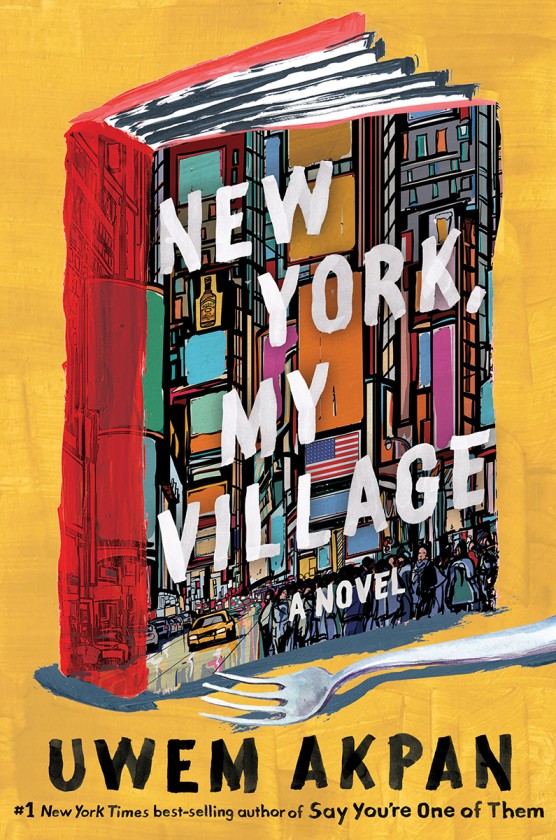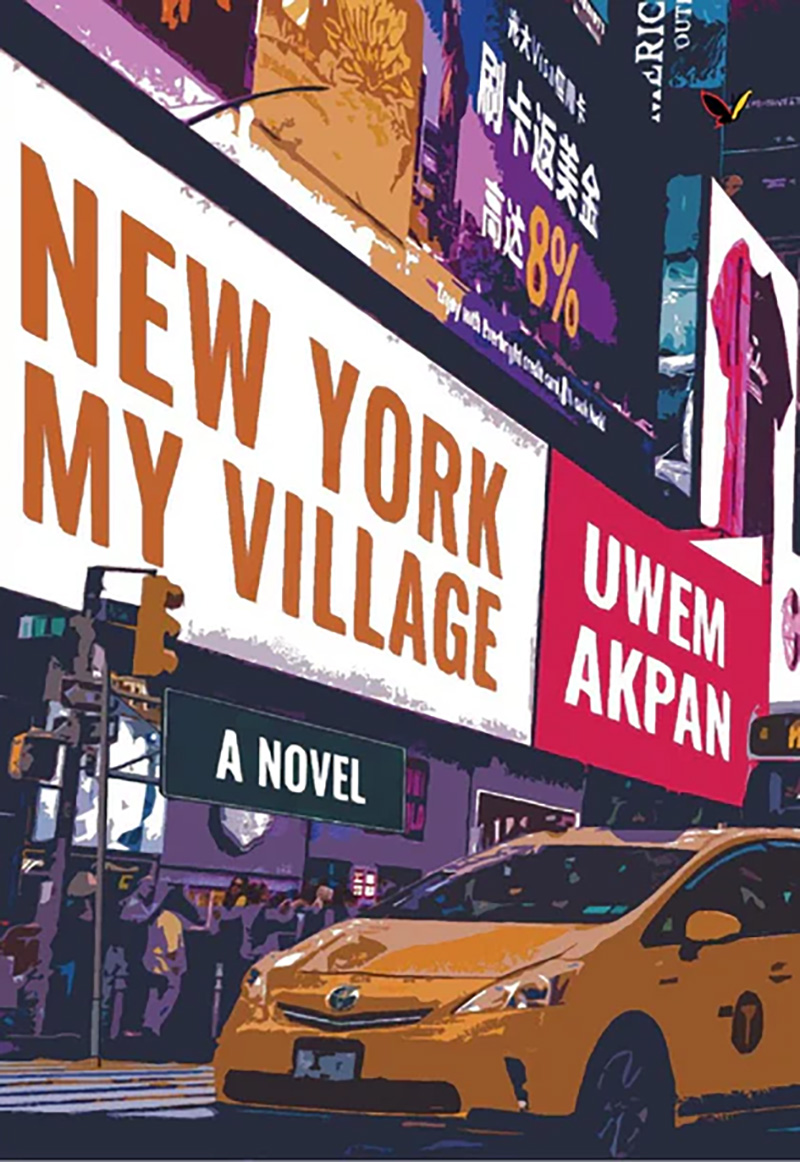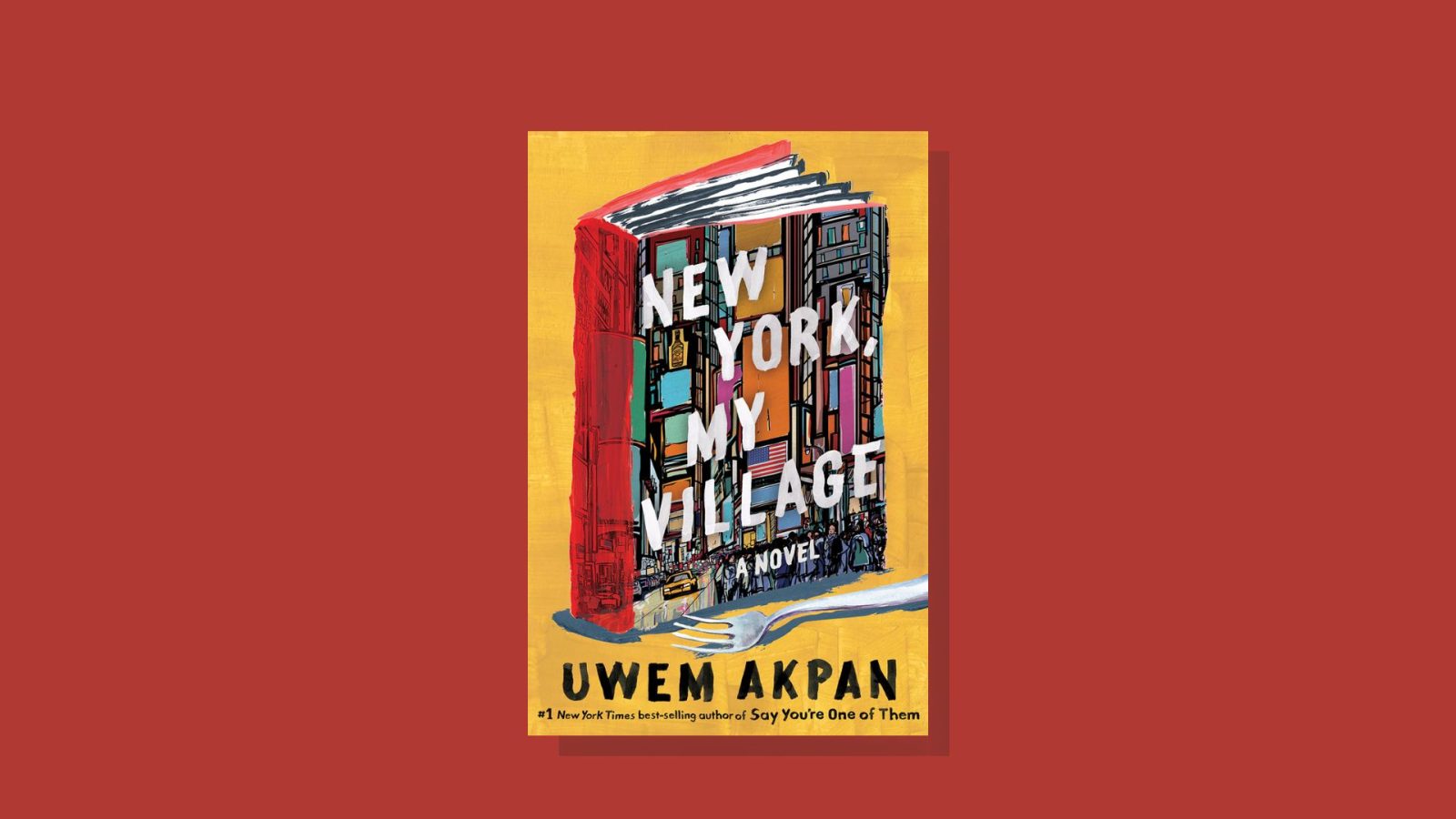New York, My Village is as much a novel about the Biafran War as it is about the protagonist’s experiences with racial discrimination in America.
By Evidence Egwuono Adjarho
In Uwem Akpan’s debut novel, New York, My Village, the reader is invited into a story that oscillates between awful experiences of the protagonist in New York and the aftermath of war-ravaged southeastern Nigeria. At its centre stands Ekong Udousoro, whose journey is both geographic and psychic. A Nigerian editor travelling to New York to work on a manuscript about the Biafra War, Ekong finds himself caught in the overlapping violences of history, race, and belonging.
The book begins, tellingly, not in New York but at the American embassy in Nigeria, where Ekong’s Annang identity is met with disbelief. “Does that mean you are not Hausa-Fulani, Yoruba, or Igbo?” his interviewer asks, reducing Nigeria’s ethnic complexity to a crude triad. The scene is rendered with painful precision, exposing both the absurdity of bureaucratic power and the costs of invisibility.
Around Ekong, other hopeful travellers face similar humiliations: a Muslim woman, armed with charms for protection, is repeatedly denied a visa on suspicion that she intends to become a prostitute once abroad; an aged man longs to join his son before he dies. The visa process emerges as equal parts theatre and cruelty, a spectacle in which Nigerians are compelled to prove their humanity, often in vain. Ekong himself is denied twice, only succeeding on the third attempt through the intervention of his white colleague, Molly Simmons.

But America itself proves no sanctuary. When Ekong finally arrives in New York, he discovers that his identity will continue to create new problems for him. At Andrew & Thompson, the publishing house where he has been placed, he is initially welcomed by his colleagues—Angela, Jack, Emily, and Molly. Yet his disagreement over a manuscript soon exposes deeper fissures.
When Ekong resists editorial groupthink, proposing a different perspective on a manuscript, he is subtly sidelined. The hostility eventually becomes explicit with Angela and Jack, whom Ekong saw as merely insensitive, revealing their prejudice in sharper and more disturbing tones.
The absurdity is heightened in New York, My Village with a grotesque metaphor of a bedbug infestation in Ekong’s apartment. At first glance, this episode appears trivial and almost comic. But this infestation is not just physical but existential. Ekong discovers he is living illegally in the apartment, and the insects spread anxiety, isolation, and stigma into his life.
His colleagues, especially Angela and Jack, treat the issue as though it were his personal failing. When his childhood friend Usen cuts him off to protect his family from the infestation, Ekong feels the coldness of America deepen.
The starkest confrontation with racism occurs in an unexpected setting: a Catholic church in New Jersey led by Father Orrin. At first, Orrin refuses to acknowledge Ekong’s presence. During Mass, Ekong and his companions are asked to sit apart from the congregation, and when they resist, the situation escalates into open hostility. This tension culminates in their departure, closely shadowed by white police officers, with the fear of unjust violence palpable on the page.
If racism defines Ekong’s New York, war defines his memory. New York, My Village is as much a novel about the Biafran War as it is about the protagonist’s experiences of racial discrimination in America. Through Ekong’s reflections and his letters to Father Kiobel, the novel revisits the War from the perspective of minorities, for whom it was neither liberation nor heroism, but annihilation.

Here New York, My Village performs its seemingly most urgent work: critiquing the partiality of existing Nigerian war literature. Through Ekong’s voice, works such as Chinua Achebe’s There Was a Country (2012) are accused of glorifying Igbo experiences while sidelining the suffering of minorities. The novel insists that minorities like the Annang were the proverbial grass trampled in the clash of elephants: “They claimed they mistakenly killed us because they didn’t know the difference. More than 35,000 people lay dead”.
Trauma from the Biafran War is distributed across the novel’s characters. Caro, Ekong’s wife, is haunted by her father’s role in the killings. Father Kiobel hoards clothing compulsively, a habit later revealed as the residue of childhood humiliation, when he was paraded naked through his village. Usen and Ofonime, desperate to shield their daughter Ujai from history, construct a fairytale version of the war.
Perhaps the most damaged figure is Tuesday, a philanthropist admired by Father Kiobel for his tireless support of the Annang people after the war. Raped by a soldier during the conflict, he develops a lifelong disgust for his own skin.
Ekong expects to find in Tuesday a kindred Annang man, but instead encounters Hughes, as he now calls himself—a white man who has not only changed his identity but also distanced himself emotionally from the people he claims to help. When Ekong and Usen visit him at a church in New Jersey, Hughes dismissively refers to them as his “Black friends”, signalling his detachment.
Through the trajectories of these characters, the novel reveals war as an indelible experience, one from which recovery is almost impossible. It also exposes the varied ways in which individuals grapple with this reality. Much like Chimamanda Ngozi Adichie’s Half of a Yellow Sun (2006) and Festus Iyayi’s Heroes (1986), Akpan’s book haunts readers with questions about the banality of war, its impact on individual lives, and the struggle to reclaim agency in its aftermath.

New York, My Village also turns an inward gaze toward the industry of publishing itself. At Andrew & Thompson, Ekong discovers a world where value is measured not by literary merit but by market potential. When he critiques a manuscript for its implausible storytelling, his colleagues respond: “Look beyond the unbelievable storytelling. The author did publish a part of this book in The New Yorker”.
While the central plot—Ekong’s experiences in America on his manuscript deal—provides a loose frame for New York, My Village, it is often overshadowed by extended digressions into wartime memory. At times, the book reads less like a novel and more like a memoir, with history—thinly veiled as fiction—overpowering everything else.
Yet the novel’s cultural texture is remarkable. Nearly every chapter is titled with an indigenous Annang word or contains phrases from the language. Food, idioms, and folklore permeate the text. For readers unfamiliar with Annang, the cadence may feel jarring, even obstructive. However, literature is arguably not only entertainment; it is also preservation, pedagogy, and transmission.
To read New York, My Village, then, is to encounter the knowledge of a people who are rarely near the spotlight in Nigeria’s contemporary literary fiction, and to turn attention towards stories habitually subsumed under broader, generalised accounts.
Evidence Egwuono Adjarho is a dynamic and evolving creative with a flair for literature and the arts. She finds joy in reading and writing, and often spends her free time observing the world around her. Her interests span a wide range of artistic expressions, with a particular focus on storytelling in its many forms including photography.




